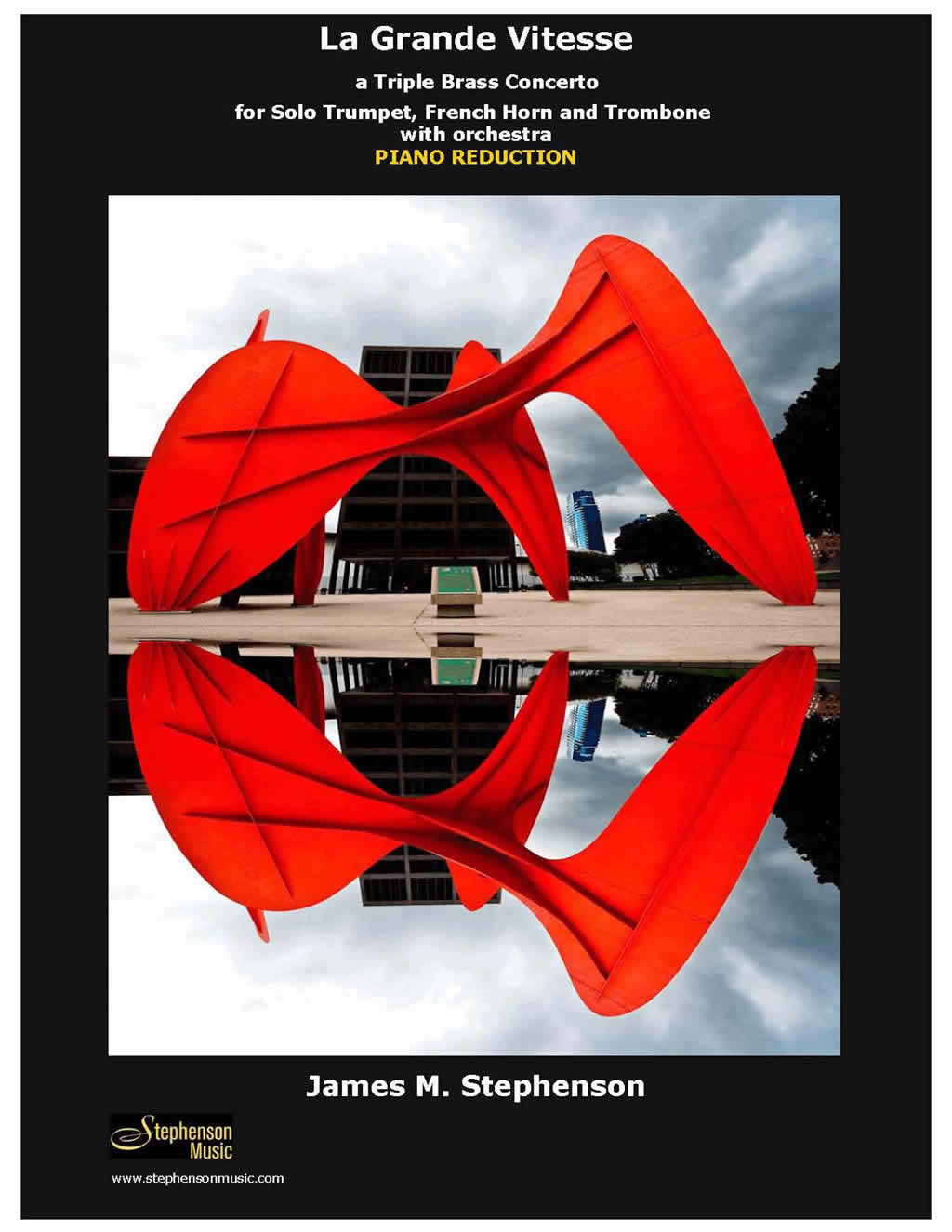ROCOmotive
$150.00 – $300.00
15′
[waveplayer ids=”13896,13897,13898,13899,13900″]
[waveplayer ids=”13897″]
[waveplayer ids=”13898″]
[waveplayer ids=”13899″]
[waveplayer ids=”13900″]
View Score Sample
For chamber orchestra – *2*2*22 – 2200 – t(doubling on percussion)) +1 – strings – celesta
Description
ROCOMotive – for chamber orchestra
by James M. Stephenson
duration: 15 minutes
instrumentation: *2*2*22 – 2200 – t (doubling on percussion) + 1 – strings, celesta and of course: a CONDUCTOR
Program Notes:
In doing research for this project, I decided to revisit my youth, and to actually go retrieve the model train from my father’s basement; we had spent a bit of time putting one together at one point. I reconstructed the train in my basement, now with the help of both my father, and MY son, and after some initial trouble, was able to get it running again, which subsequently inspired the music for this piece.
I. Engine – CPRail
Whenever I would start my train, the first thing to happen would be a rather unpleasant sound from the transformer, and at times from the engine itself, most notably as it approached turns. This unpleasant sound was (close to) a Bb, and is represented right at the beginning. Incidentally, whenever the train would stop – due to a derailment – it would always have to back up first, before returning to forward motion. The percussion uses actual model train tracks to create the “chugging” sound. The melody is that of a Pacific northwest folk tune from the late 19th century that actually mentions the CP (Canadian Pacific) Railway, called “Drill, Ye Tarriers, Drill”. This melody is played by instruments in their highest registers, since we are, of course, in the land of model reproductions of reality. The harmony is based on the “ROCO- motive” itself (a half-diminished 7th chord – more commonly known as a train whistle sound). Finally, at the end, the train speeds up as it approaches a turn, but of course becomes derailed. The last sounds are those of the wheels finally coming to rest, as the engine lay on its side.
II. Great Northern (blue coal car)
As one might expect, I chose to go with the blues on this one, given the color of the train car. I took my inspiration for the form of the work from the shape of the underside of the car: \ _____ / (the timpani descends at the beginning, and rises in reverse at the end). There are a few hints at the old west hidden amongst the music, as that is where the Great Northern line primarily existed. Lastly, the horns (whether French horns or English horn) receive prominent parts, in homage to the Great Northern logo, which displays a ram with horns. The walking bass line outlines the harmony of the “ROCO- motive” once again.
III.. Box-car: Dr. Pepper
The first thing I noticed when looking at this car was the slogan: “Pepper-up at 10, 2, & 4 o’clock.” I took that information as an opportunity to create music that subsequently gets faster and faster each time the bell rings (first, ten times, then twice, and lastly 4 times, of course). Secondly, because it is a box-car, I took a little liberty and wrote the music in the style of a “box-trot”. Yes, I made that up, but I believe it’s somewhat apparent what I was after. Lastly, I have to admit, that of the five movements, this is the one that purposefully sounds the most like “pop” music.
IV.. DuPont oil tanker
This is the shortest movement, and the music that comes the most dangerously close to going off the rails. I decided I needed a violin feature, and therefore gave the first violins more notes in 32 measures than some instruments might see in an entire concert. The second violins add support every once in a while, to help keep them “on the rails”. Temple blocks knock around a bit once in a while, but the strings keep going, representing the “anti-knock” compound advertised on the car’s side. The tempo is marked “very slick”, of course, and train whistles scream here and there, as the movement comes to a frantic finish.
V. Little Red Caboose
Ah, the caboose; perhaps the car that otherwise might get overlooked, because it comes at the end. Which is why I decided to give it its day, and make it (hopefully) the most beautiful movement of the suite. The melody presented in unison by the strings is the original folk song from the first movement: “Drill, Ye Tarriers, Drill” – but now backwards – because, as we know, model trains (and regular trains) often have to run in reverse. As the music begins to develop and grow, themes from the other four movements work their way into the texture. The final fadeout combines the “Rocomotive” harmony one last time against solos in the bass (one might consider it the caboose of the orchestra) and the celesta, an instrument used by special request for this piece. But as the music fades out, there is also the possibility that all of this was music of the imagination, and that all the composer wanted to do was revisit his childhood, and recall the precious times he had spending with his father, putting together a model train. I hope the audience enjoys the journey.
~ Jim Stephenson; January 16, 2019
Additional information
| Duration | |
|---|---|
| Type of Purchase | |
| Type of Work |





